I'm going to start this article the same way I started the article on the best Japanese engines. Making fun of the Diesels naturally…
Therefore, devotees of the iconic engine 1.9 R4 TDI PD in its most diverse variations, they can go preach their religion to another band. Yes, it's an excellent engine. But no, it's just a Diesel. After writing this I will never sleep rested again… a black cloud from a badly reprogrammed ECU will descend on me.
The question of "German engineering"
Whether we like it or not, Germany is the heart of the European car industry. Land of Volkswagen, Porsche, Mercedes-Benz da Ferr… oops, this is Italy. But do you understand where I wanted to go? It doesn't mean that the best engineering is all concentrated in Germany, but it's those compulsive drinkers of beer and mulled wine — it's called Glühwein and it even drinks well … — who are at the forefront of events.
That's why non-European brands, when they decide to win in the old continent, base their "camps" in German lands. Want examples? Ford, Toyota and Hyundai. Non-European brands that have chosen Germany to meet the expectations of the world's most demanding customers: Europeans.
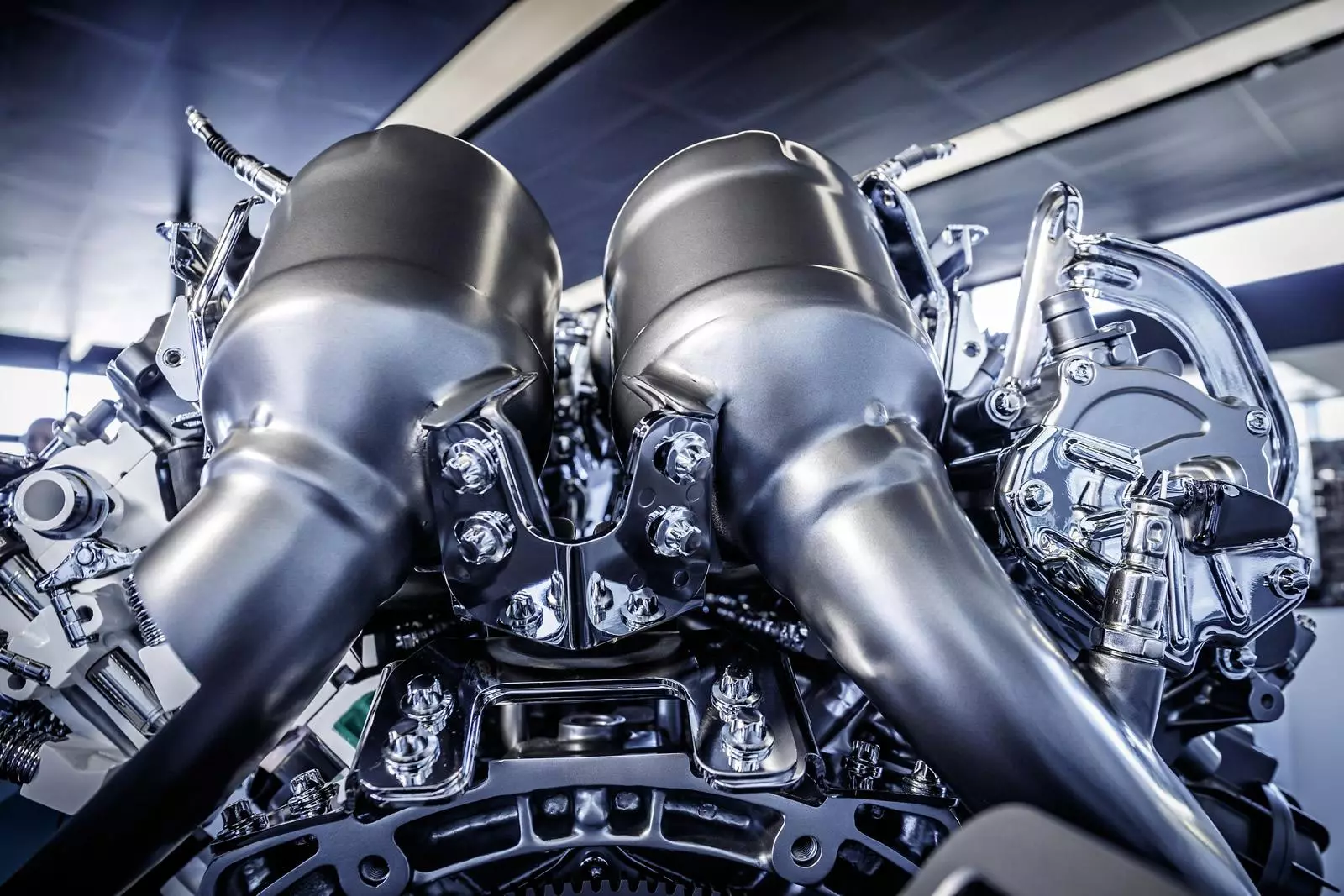
That said, let's recall some of the best mechanics born in German lands. Are there any engines missing? I'm sure it does. So please help me out by using the comment box.
Another note! As in the list of the best Japanese engines, the order of the engines is also random in this list. But I can go right now that my TOP 3 should include the Porsche M80, BMW S70/2 and Mercedes-Benz M120 engines.
1. BMW M88
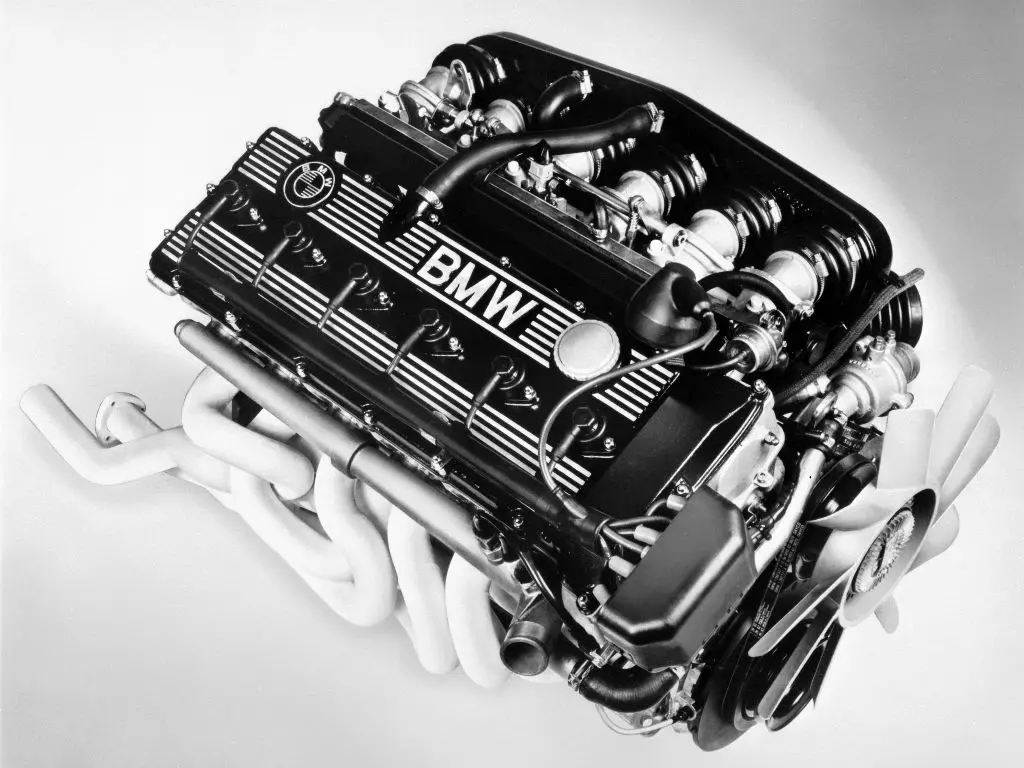
It was on this engine that BMW built its reputation in the development of straight-six engines. Produced between 1978 and 1989, the first generation of this engine equipped everything from the iconic BMW M1 to the BMW 735i.
In the BMW M1 it debited around 270 hp, but its development potential was such that the M88/2 version that fitted the Group 5 of the Bavarian brand reached 900 hp! We were in the 80s.
2. BMW S50 and S70/2
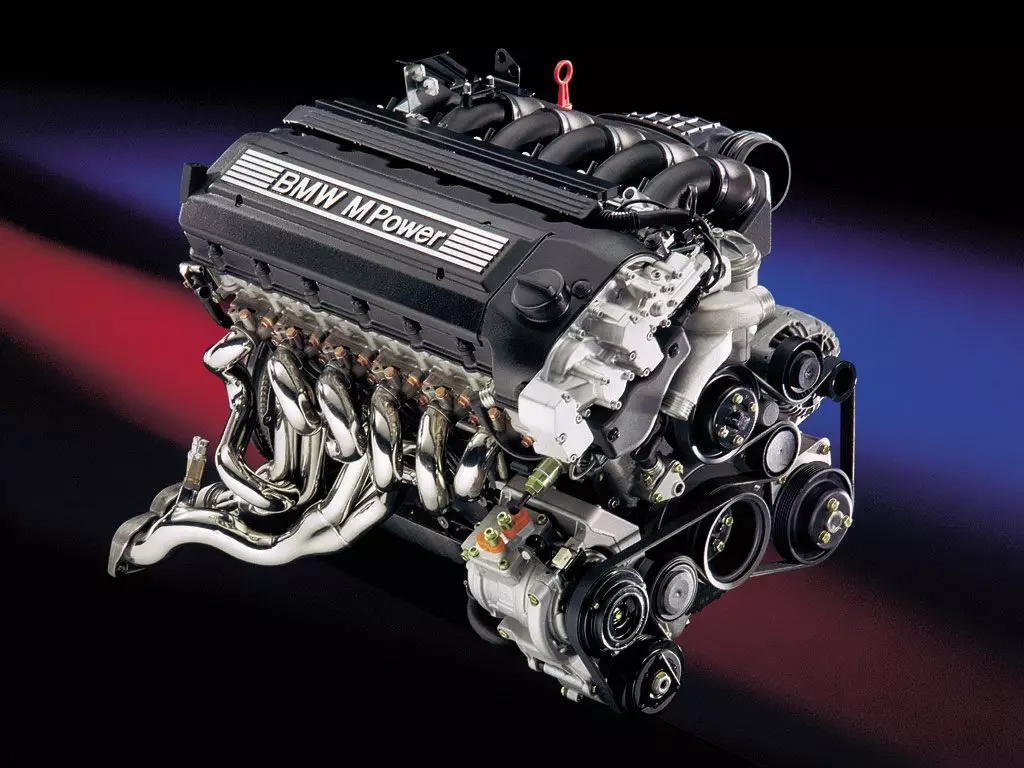
The S50 engine (spec. B30) was a very special inline six-cylinder, had 290 hp of power, used the VANOS valve control system (a sort of BMW VTEC) and equipped the BMW M3 (E36). We could stop there, but the story is still halfway through.

Are you still halfway through? So double up. The engine, not the story. BMW combined two S50 engines and created the S70/2. Result? A V12 engine with 627 hp of power. Isn't the name S70/2 strange to you? It's natural. It was this engine that powered the McLaren F1, the fastest atmospheric engine model ever and one of the most beautiful pieces of engineering in history. Without any exaggeration.
3. BMW S85
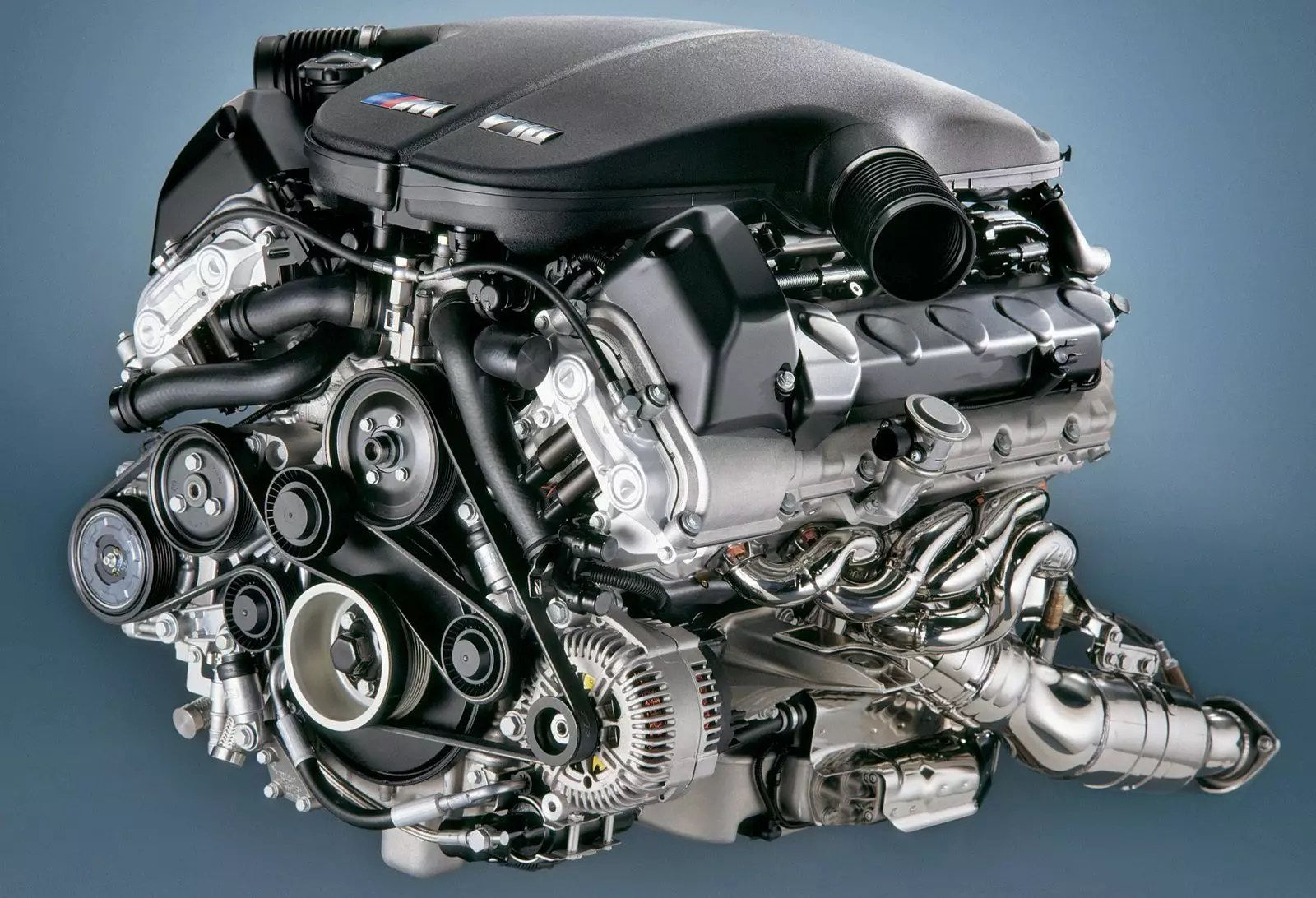
The S85 engine — also known as the S85B50 — is possibly BMW's most interesting engine of the past 20 years. To put it bluntly, this is the atmospheric 5.0 V10 engine that powered the BMW M5 (E60) and M6 (E63). It delivered 507 hp of power at 7750 rpm and a maximum torque of 520 Nm at 6100 rpm. Redline? At 8250 rpm!
It was the first time that a sports saloon used an engine with this architecture and the result was… unforgettable. The sound emanating from the engine was intoxicating, and the power delivery demolished the rear axle tires as easily as I melted 100-escudo coins in arcade rooms when I was a kid.

From a technical point of view, it was a work of art. Each cylinder had an individually controlled throttle body, forged pistons and crankshaft supplied by Mahle Motorsport, (almost!) dry crankcase with two oil injectors so lubrication never failed on acceleration or cornering in support.
Anyway, a power concentrate that in total weighed just 240 kg. With a bespoke exhaust line, the BMW M5 (E60) is one of the best-sounding saloons in history.
4. Mercedes-Benz M178

It's a very recent engine. First launched in 2015, the M177/178 engine family complies with the AMG construction principle “one man, one engine”. This means that all engines in this family have a technician responsible for their assembly.
A great way to guarantee the reliability of mechanics, but above all, one more detail to rub in your friend's face. “My car engine was assembled by Mr. Torsten Oelschläger, and your engine? Ah, it's true… your BMW doesn't have a signature”.
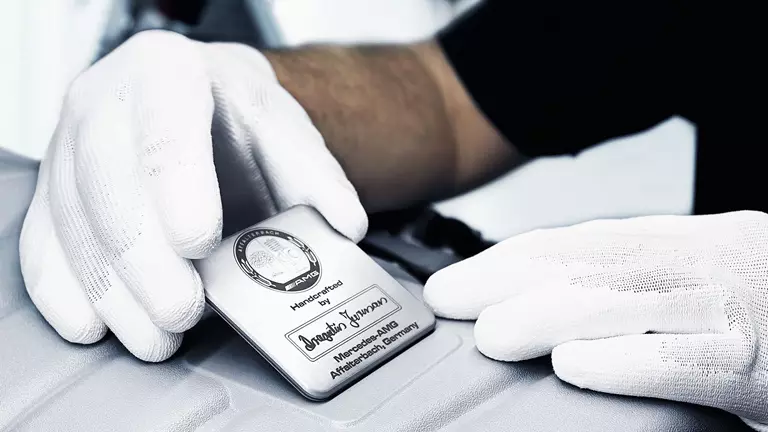
If this argument — a little boasting, it's true … — doesn't put an end to your friendship, you can always start the engine and give life to the eight cylinders in V powered by two turbochargers with 1.2 bar of pressure, which depending on the version it can deliver between 475 hp (C63) and 612 hp (E63 S 4Matic+). The sound is great. #sambandonafacedasenemies
Another very interesting point about this engine is the cylinder deactivation system that allows for a reduction in consumption and emissions at cruising speed. Power and efficiency hand in hand, blah blah blah… who cares!
But enough of writing about this engine. Let's move on to (even!) more serious things…
5. Mercedes-Benz M120
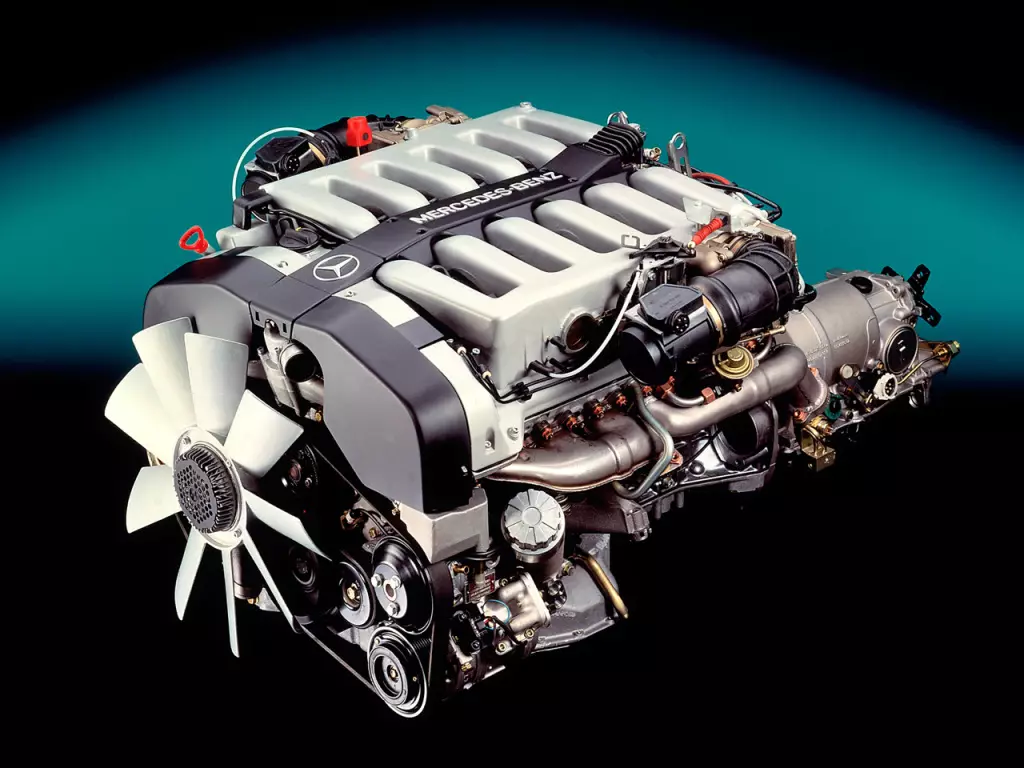
Declaration of interests: I am a big fan of this engine. The Mercedes-Benz M120 engine is a kind of James Bond engine. He knows class and elegance, and he also knows a thing or two about "pure and hard" action.
Born in the early 90s, it is a V12 block in forged aluminum that began its career in the service of oil magnates, presidents of the republic, diplomatic bodies and successful businessmen (I hope one day to join this last group ) when animating the massive Mercedes-Benz S600. In 1997, he was asked to leave the pampering behind and take part in the FIA GT Championship, animating the Mercedes-Benz CLK GTR.
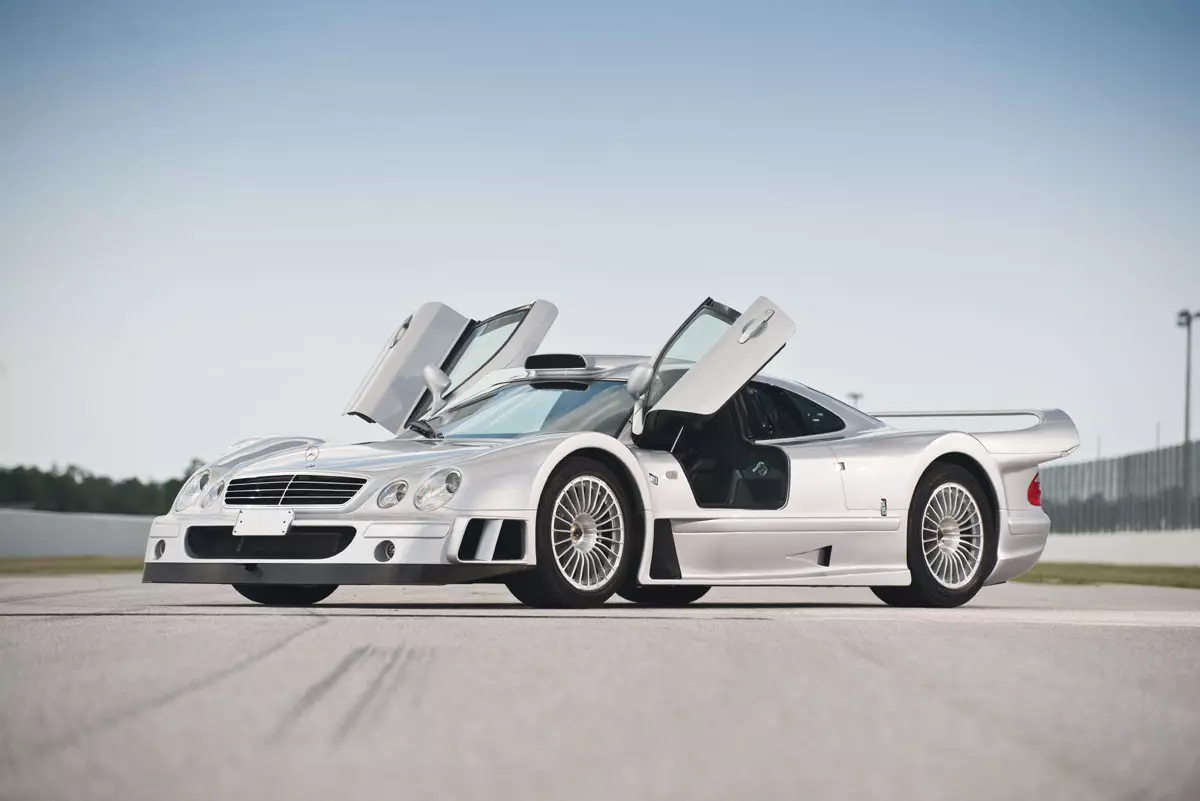
For regulatory reasons, 25 homologation units were produced with license plate, turn signals… in short, all the necessary devices to be able to go to the supermarket in a competition car without worrying about the police authorities. The world is now a better place for it.
But the ultimate interpretation of this engine came at the hands of Pagani. Mr. Horácio Pagani saw the M120 as the ideal engine to equip his super sports cars for two reasons: reliability and power. About three years ago I wrote about a Pagani that already had more than a million kilometers — remember it here (the formatting of the article is terrible!).
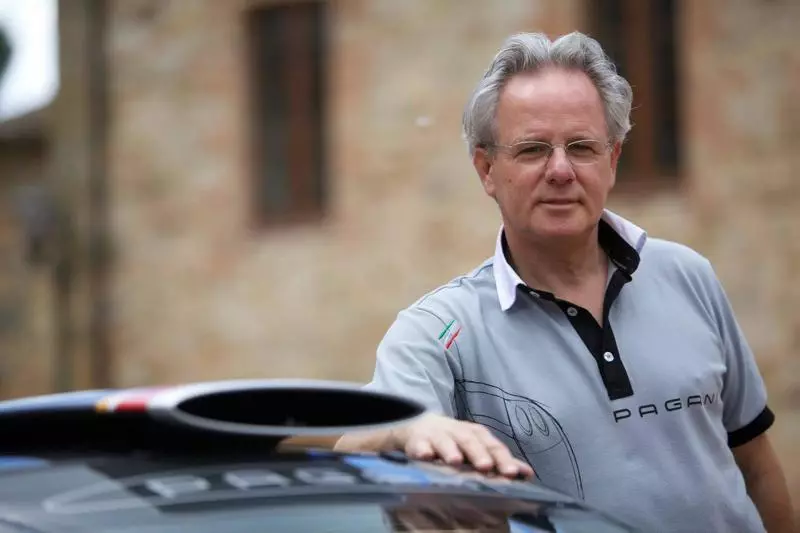
If you want to know all the details of this loan of engines between Pagani and Mercedes-Benz, you must visit this article — you know we live on your views don't you? THEN CLICK!
6. Volkswagen VR (AAA)
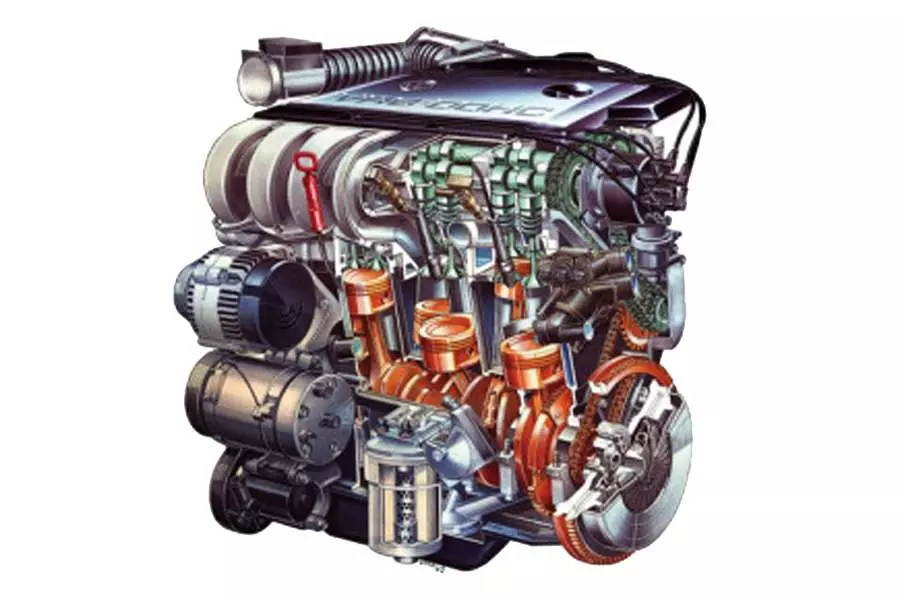
Let's talk about models as different as the Golf and the Chiron. You'll understand why…
The term VR derives from the combination of the V (which concerns the engine architecture) and Reihenmotor (which in Portuguese means in-line engine). In a somewhat rough translation we can translate the term VR as “inline V6 engine”. Volkswagen originally developed this engine for the purpose of mounting it transversely on front-wheel drive models, so it had to be compact.
In terms of operation, Volkswagen's VR engine operated in every way like a traditional V6 — even the ignition order was the same. The big difference compared to the traditional V6s was the “V” angle of only 10.6°, far from the traditional angles of 45°, 60°, or 90°. Thanks to this narrow angle between the cylinders, it was possible to use just one head and two camshafts to control all the valves. This simplified engine construction and reduced costs.
Ok… so aside from the fact that Volkswagen managed to reduce the size of the engine, what are the merits of this engine? Reliability. It was an extremely easy engine to prepare, withstanding power values in excess of 400 hp. The unique camshaft and valve angle was the major limitation of this engine.
It was from the technology used in this engine that the Volkswagen Group's W8, W12 and W16 engines were derived. That's right! At the base of the Bugatti Chiron's engine is the engine of a… Golf! And there is no harm in that. It's just amazing that at the base of one of the most exclusive and powerful cars in history is a quiet Golf. Everything has a beginning.
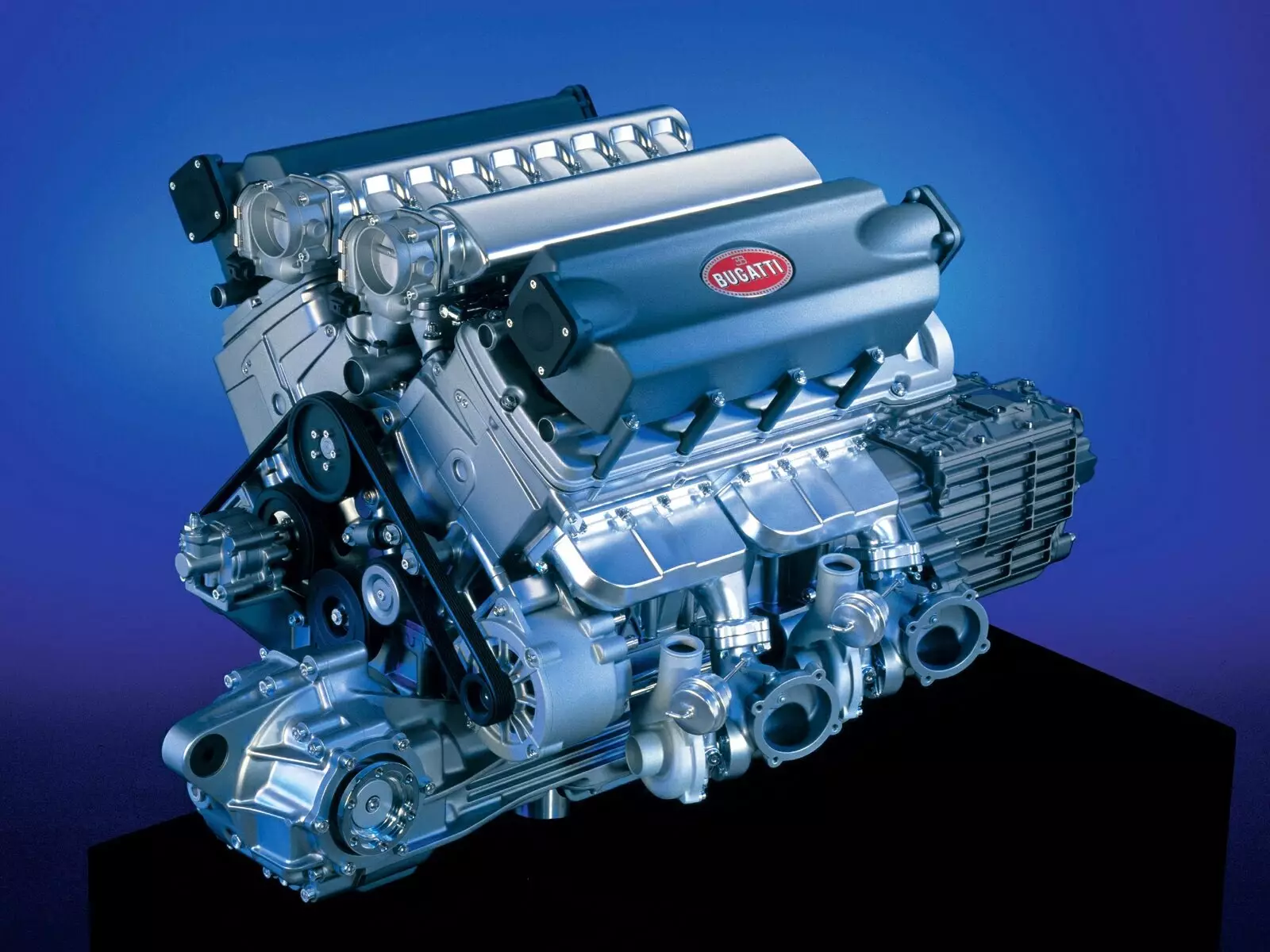
7. Audi 3B 20VT
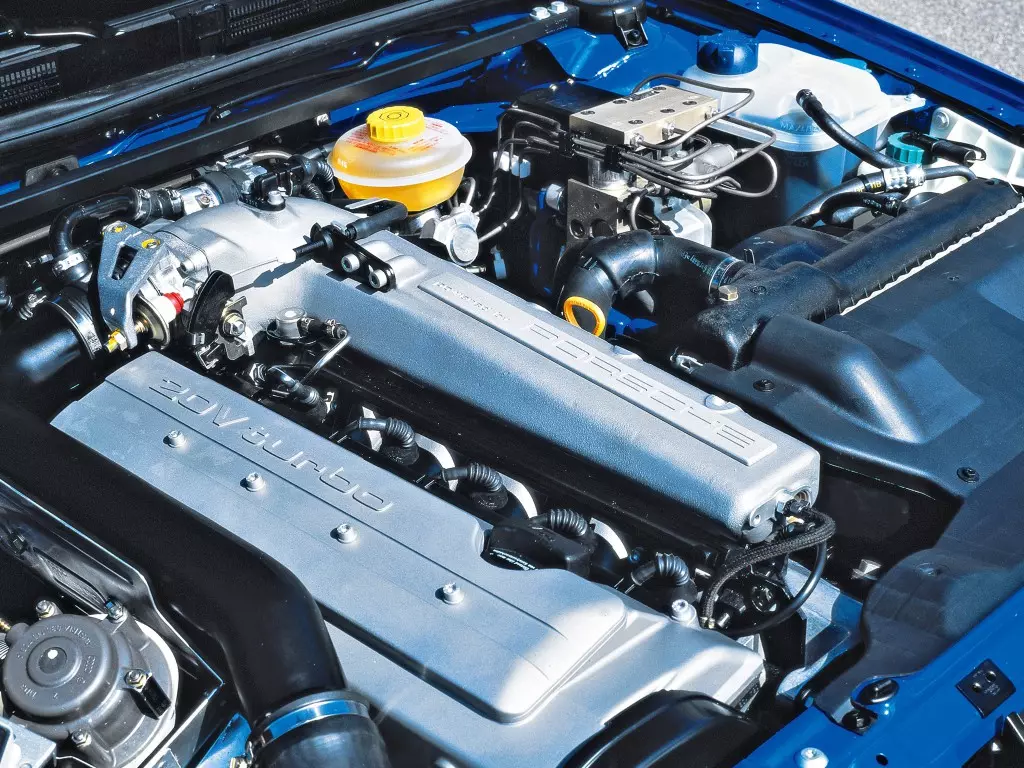
Inline five-cylinder engines are to Audi what flat-six are to Porsche or straight-six are to BMW. It was with this architecture that Audi wrote some of the most beautiful pages in its history in motorsport.
The 3B 20VT engine was not the first Audi engine with this configuration, but it was the first "serious" production engine with 20 valves and Turbo. One of the most popular versions equipped with this engine is the Audi RS2. In the ADU version — which equipped the RS2 — this engine had a “little hand” from Porsche and delivered a healthy 315 hp, which could be transformed into 380 hp with just a few “touches”.
There is a lot more to say about this engine, but I have eight more engines to write. The story continues with CEPA 2.5 TFSI…
8. Audi BUH 5.0 TFSI
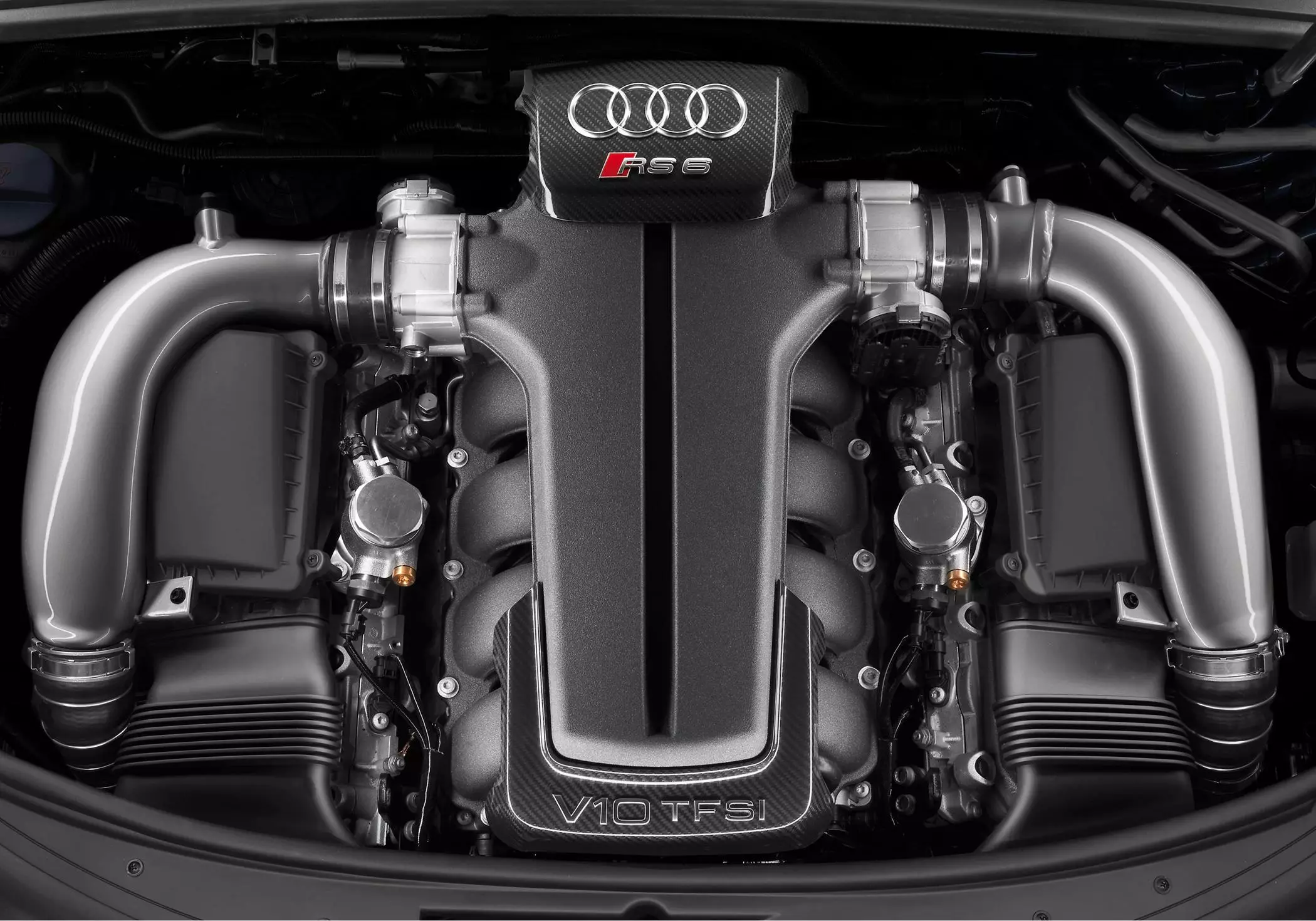
Who has never dreamed of an RS6? If you've never dreamed of one, it's because in your heart's place you have a cold and gray calculating machine, concerned with consumption and the price of gasoline. If you've ever dreamed of joining us, you're on the right side of strength. And speaking of strength, strength was what this engine did not lack.
At the heart of the action of the Audi RS6 (C6 generation) was precisely this BUH 5.0 TFSI bi-turbo engine with 580 hp, aluminum block, dual injection system, two turbochargers at 1.6 bar (IHI RHF55), fuel injection system. high pressure (FSI) and interior parts worthy of the highest watchmaking. Know that Audi has applied all its know-how to this engine in handling aluminum, whether through casting or machining parts.
It is possible to count on the fingers of one hand the owners that with this base did not take the opportunity to increase the power to 800 hp. I would do the same...
9. Audi CEPA 2.5 TFSI
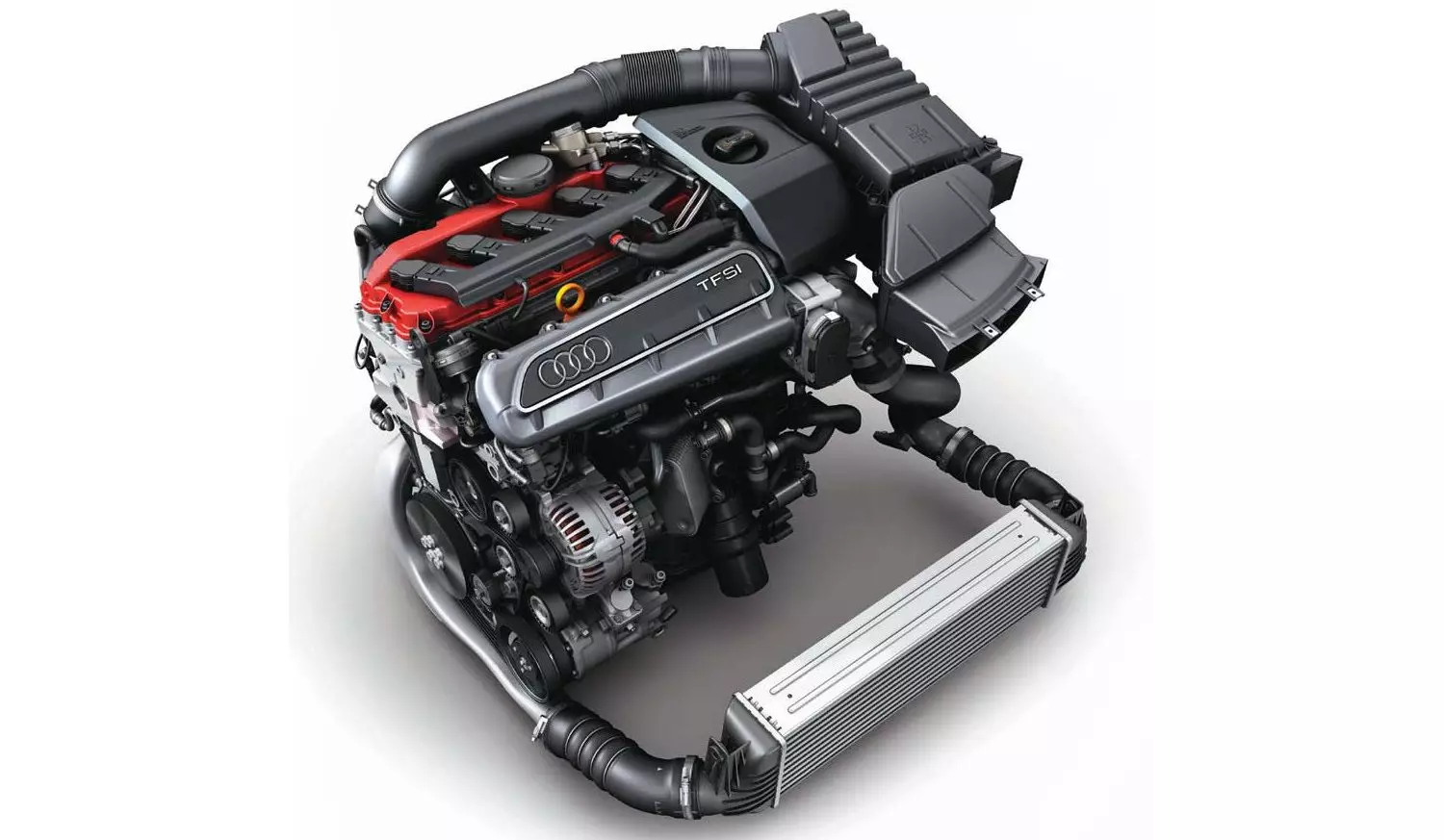
It's the ultimate interpretation of Audi's in-line five-cylinder engine. As we saw in the BUH 5.0 TFSI, Audi used the best on the market for this engine too.
In the new Audi RS3 this engine reached 400 hp for the first time. Versions of this engine equipped with the BorgWarner K16 turbocharger can compress up to 290 liters of air per second! To process this amount of air and gasoline, the CEPA 2.5 TFSI has a Bosch MED 9.1.2 control unit. Did you like this engine? Look at this.
10. Audi BXA V10
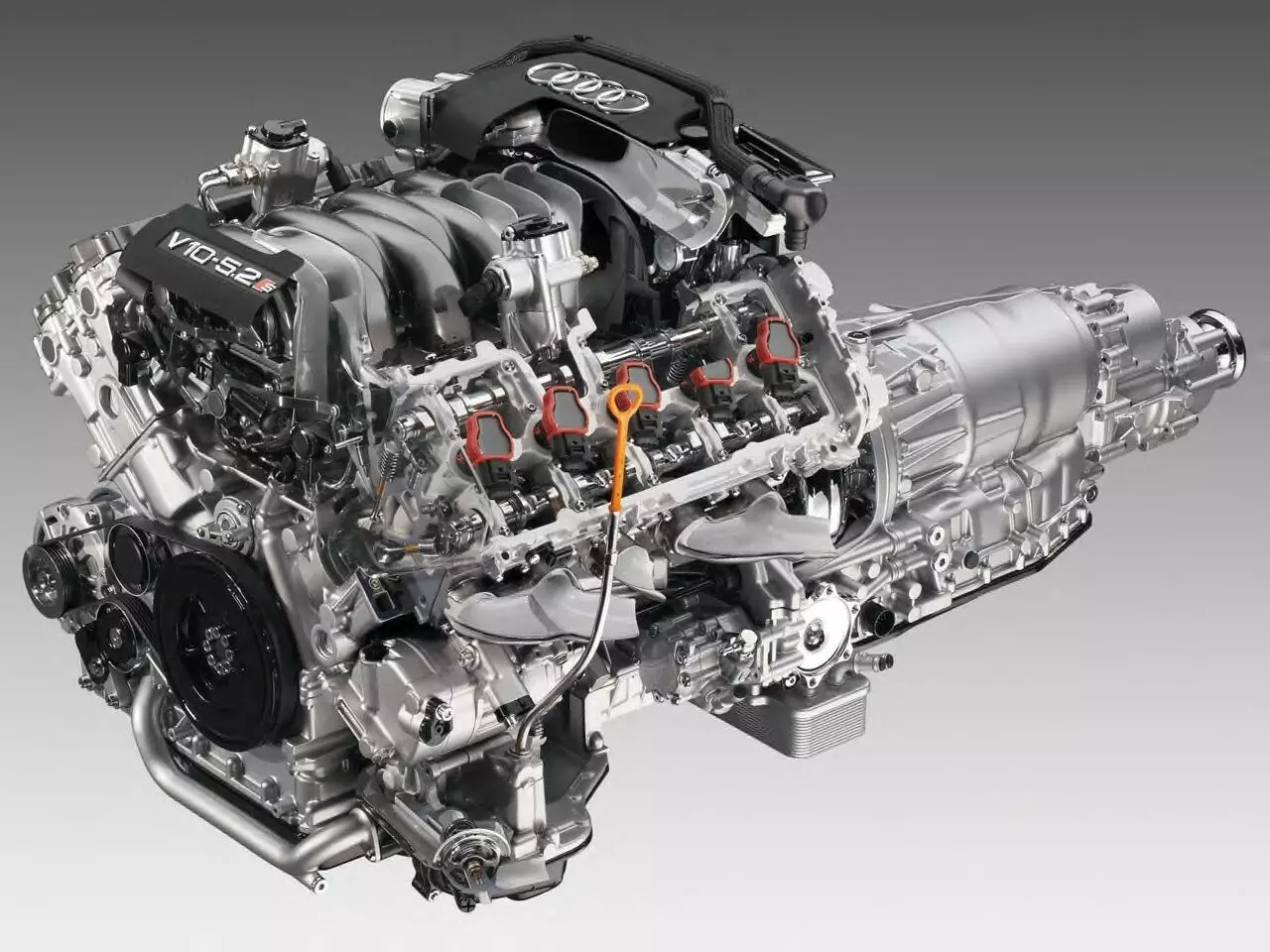
Born German but naturalized in Italy. We can find this engine in Audi models (R8 V10) and in Lamborghini models (Gallardo and Huracán) in a proprietary derivative of the Italian brand, but which shares all the technology with Audi.
Powers vary depending on the version, and can exceed 600 hp. But the main highlight of this engine is its reliability and ability to rotate. In such a way that this model, along with the Nissan GT-R has been one of the favorites to break records in drag-race races with production cars.
11. Porsche 959.50
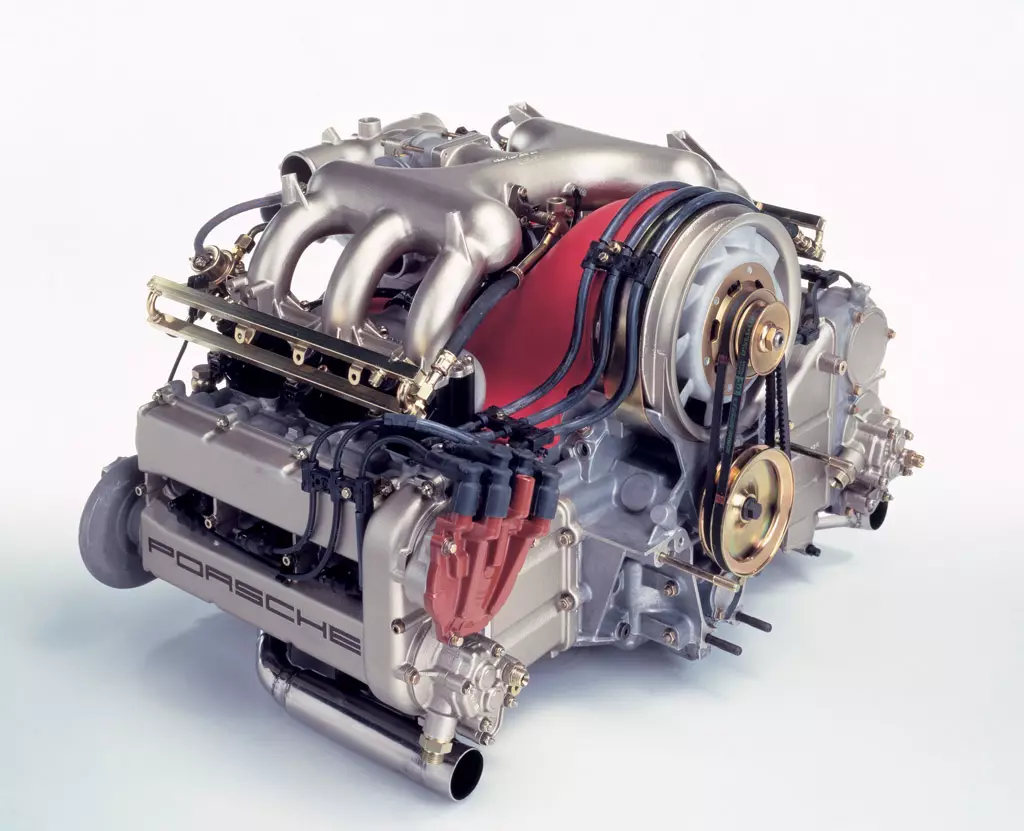
With just 2.8 liters of capacity, this flat-six engine powered by two turbochargers developed 450 hp of power. This in the 80s!
It incorporated all the technologies and innovations that Porsche had at the time. It was born with the purpose of making Porsche return to the World Rally Championship, however the extinction of Group B changed the turns to the German brand. Without Group B, this engine ended up playing in the Dakar and winning.
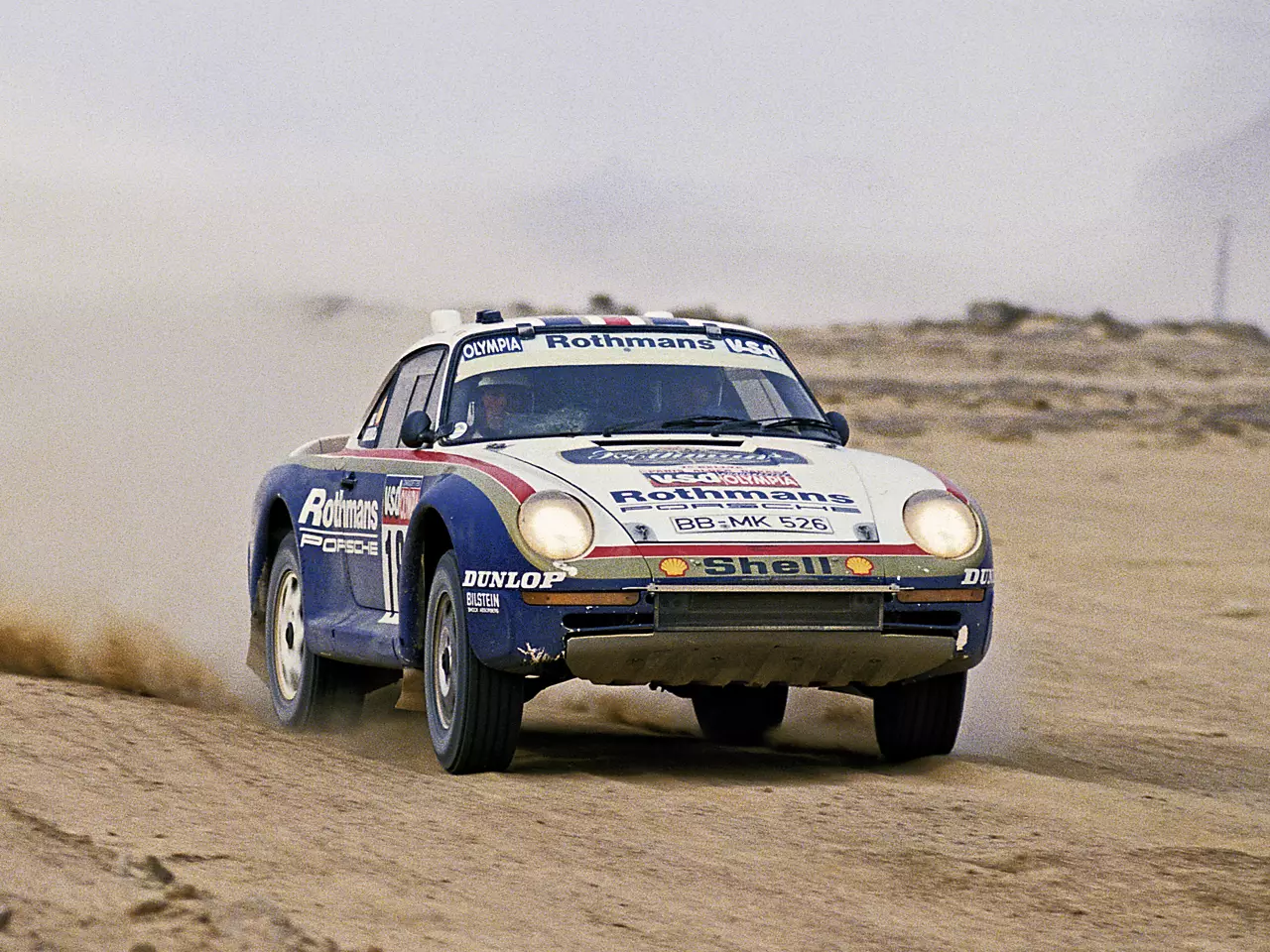
It was marketed with the Porsche 959, the ultimate rival of the Ferrari F40, and had a range of technologies that are still not ashamed of in front of a modern car. The power and all-wheel drive of the Porsche 959 is still capable of putting many cars to their senses today. As a curiosity there was an off-road change, which actually wasn't off-road at all — you know more here.
12. Porsche M96/97
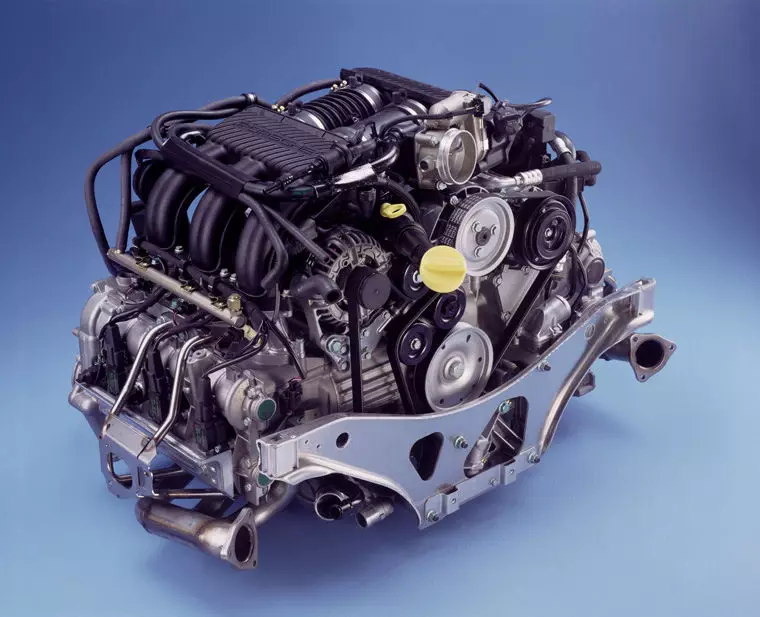
If the Porsche 911 still exists today, give thanks to this engine in the M96/97 versions. It was the first water-cooled flat-six engine to power the 911. It spelled the end of the “aircooled” era but guaranteed the survival of Porsche and more specifically the 911.
More than enough reasons to be included in this list. The first generation of the M96 suffered from some problems, especially at the block level, which had weaknesses in some units. Porsche quickly reacted and subsequent versions once again displayed the recognized reliability of the Stuttgart brand.
13. Porsche M80
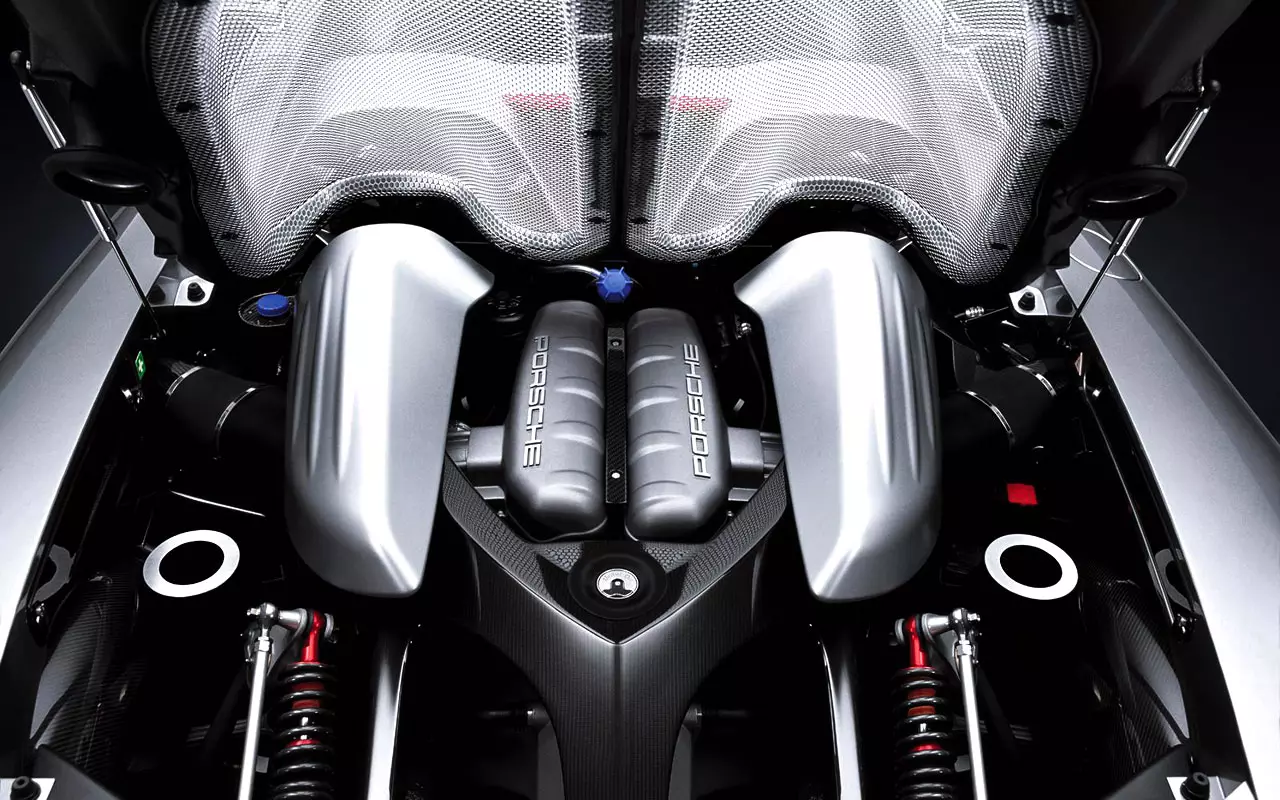
The history of this engine is staggering but it deserves a close reading! It mixes with the history of Porsche in F1 and the 24 Hours of Le Mans. It's too extensive to rewrite in this article, but you can read it all here.
In addition to being powerful, the noise of this engine is simply sublime. This M80 engine and the Lexus LFA engine are in my personal TOP 5 best sounding engines.
14. Porsche 911/83 RS-spec
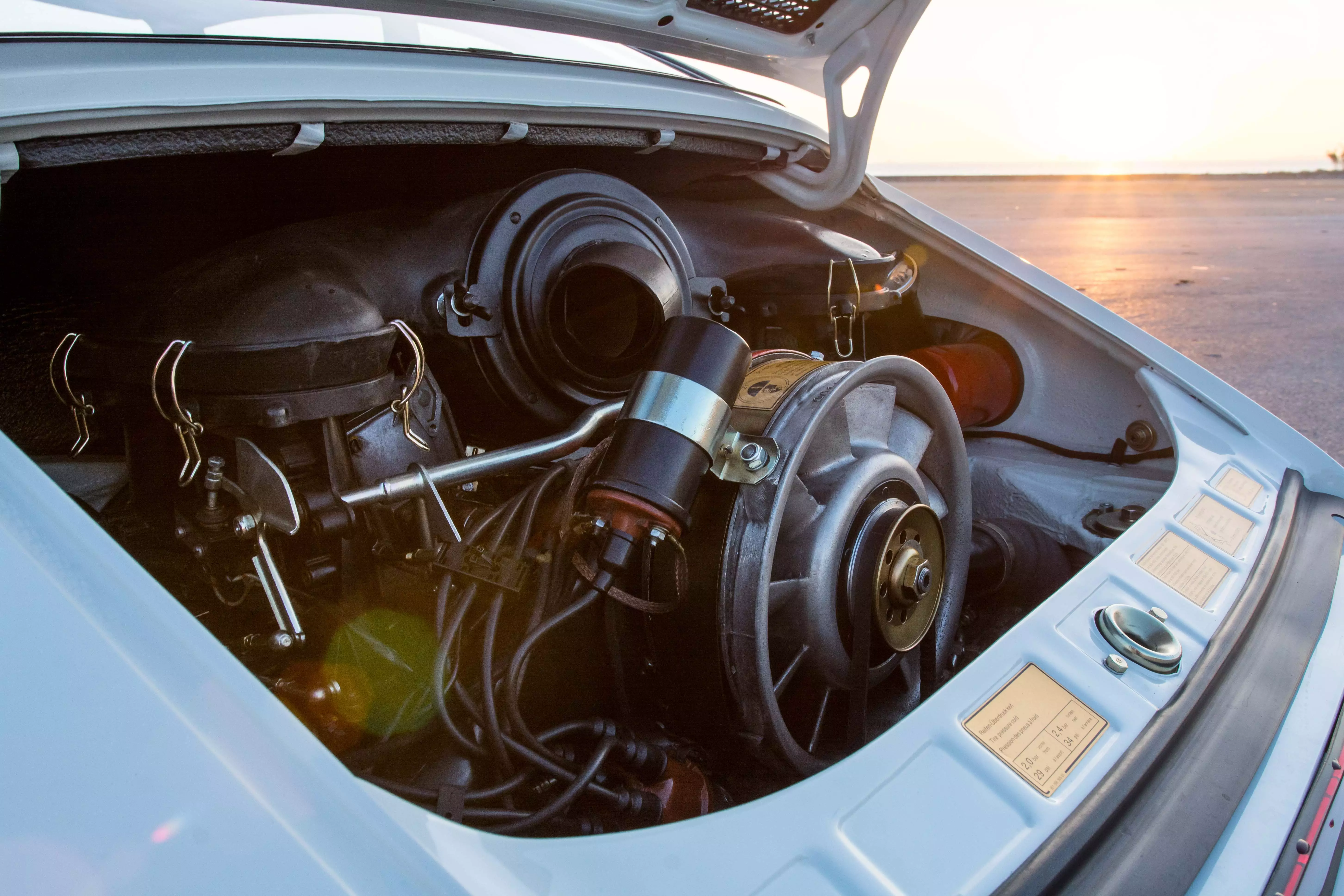
It was mandatory to talk about the engine that started the story of the Rennsport (RS) at Porsche. Lightweight, rotatable and very reliable, that's how we can describe this flat-six from the 60s.
One of its particularities resided in the mechanical injection system (MFI) from Bosch, which gave this engine a remarkable speed of response and sensitivity. Its 210 hp of power may seem small nowadays, but it catapulted the lightweight 911 Carrera RS from 0-100 km/h in just 5.5 seconds.
And since we are talking about Porsche engines, I have to assume a flaw. I never wrote a line about Hans Mezger. I promise it doesn't stay that way!
15. Opel C20XE/LET
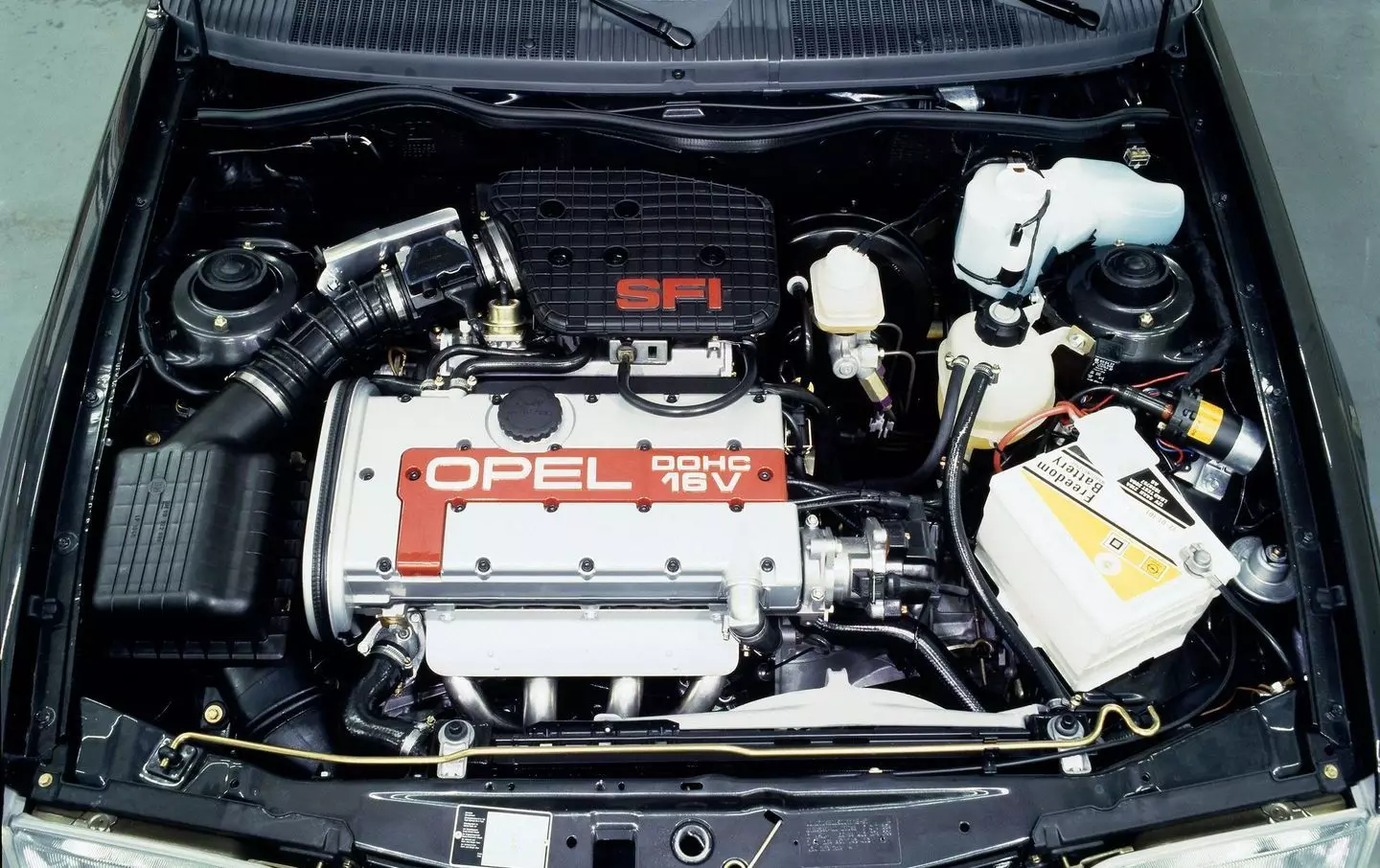
I do not believe. Are you still reading this article? I hope so. They can "scan" the entire internet and its search engines, I haven't found any article as extensive as this one about the best German engines ever. So I'm going to close with a golden key! An Opel…
When I was a kid, one of my four-wheel heroes was the Opel Calibra. I was about six years old when I first saw the Opel Calibra in the Turbo 4X4 version. It was red, had a very elegant bodywork and foreign license plate (now I know it was Swiss).
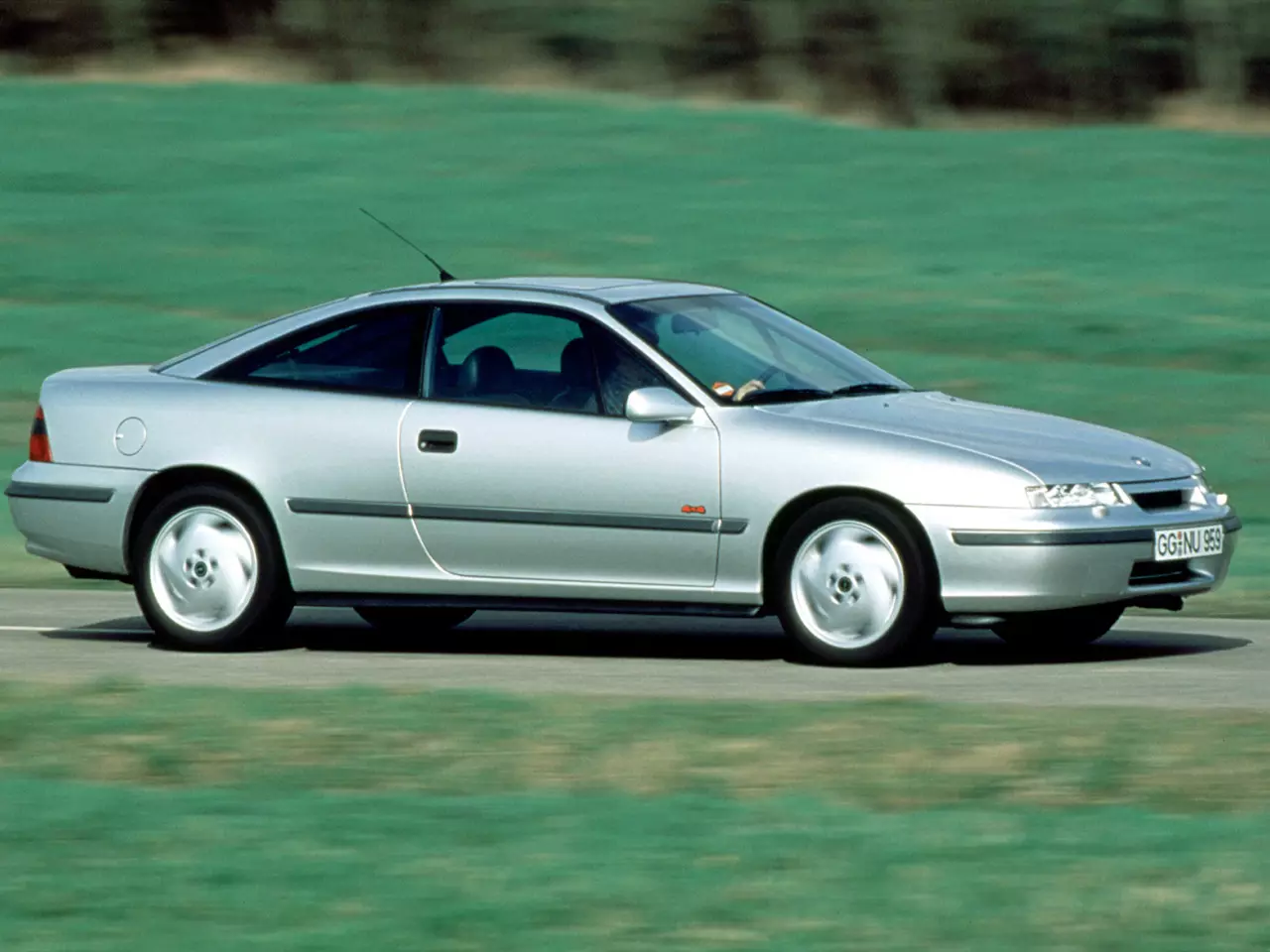
It was one of the best-born sports cars in Opel's history and came equipped with a C20LET engine, which in practice was a C20XE with some upgrades. Namely a KKK-16 turbocharger, forged pistons by Mahle, electronic management by Bosch. Originally it had only 204 hp of power, but the quality of construction of all the components allowed for other flights.
This engine family was so well born that even today many starter formulas use the C20XE version of this engine. An engine that easily reaches 250 hp without using a turbo.
The TOP 15 of German engines has finally come to an end. Were many engines left out? I know it does (and I haven't even entered the competition engines!). Tell me which ones you added in the comment box and there might be a “part 2”. Next list? Italian engines. I'm dying to write about the Busso V6.
